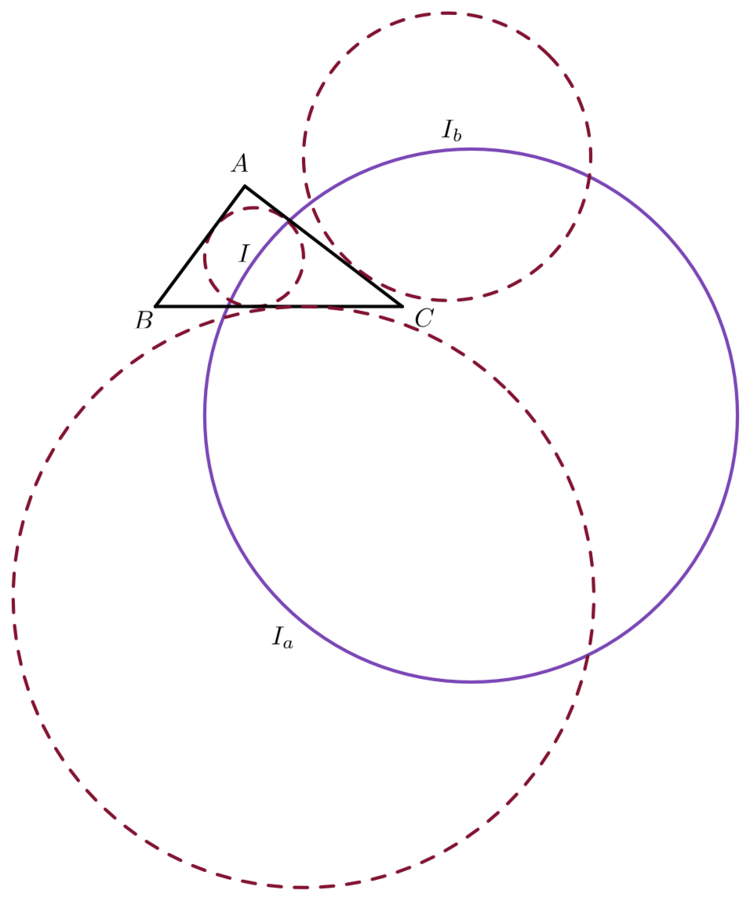Too Many Circles, Too Distracting
 Let
be the incenter,
excenter,
excenter respectively of a triangle
with side lengths
Let
be the circumradius of
Find
Let
be the incenter,
excenter,
excenter respectively of a triangle
with side lengths
Let
be the circumradius of
Find
The answer is 14.
This section requires Javascript.
You are seeing this because something didn't load right. We suggest you, (a) try
refreshing the page, (b) enabling javascript if it is disabled on your browser and,
finally, (c)
loading the
non-javascript version of this page
. We're sorry about the hassle.
Let I c be the C -excenter of triangle A B C . Since the internal and angle bisectors of any angle are perpendicular, it follows that triangle A B C is the orthic triangle of triangle I a I b I c . Therefore, the circumradius of triangle I I a I b is the circumradius of triangle I a I b I c , which is twice the circumradius of triangle A B C . By the Law of Cosines, cos A = 2 b c b 2 + c 2 − a 2 = 2 ⋅ 8 ⋅ 5 8 2 + 5 2 − 7 2 = 2 1 Therefore, sin A = 2 3 . By the Extended Law of Sines, the circumradius of triangle A B C is 2 sin A a = 3 7 . It follows that 3 R = 1 4 .